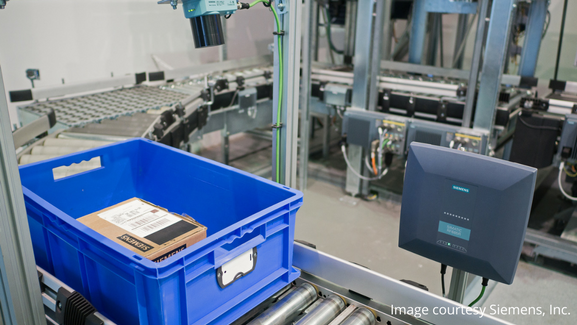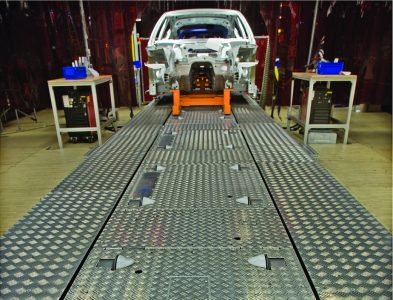
Recommended UHF RFID Applications
This is the first chapter in our eBook, Your Guide to Implementing UHF RFID and it was written by Ian Mogab, Controls Engineer.
What is UHF RFID?
Many manufacturers are looking to RFID (Radio Frequency Identification) as a solution to improve efficiency, increase visibility and drive “smart” manufacturing. RFID has the capability to do these things and more, but did you know there are multiple types of RFID?
Ultra High Frequency (UHF) RFID is a newer technology in the industry, and brings with it some huge advantages not found in other more traditional types of RFID (high frequency and low frequency). UHF readers operate at 900 MHz which gives them a much larger range and achieves higher data transfer rates. These characteristics make UHF RFID a more flexible and powerful identification and tracking tool than other RFID technologies.
Recommended Applications
Traditionally, UHF has excelled in inventory systems due to its ability to track palletized goods efficiently. However, as the technology has improved, it is becoming increasingly common in industrial and manufacturing environments.

For example, UHF shines in applications that require long-range reads. If a process currently involves an operator having to pick up a hand scanner to scan a part, or an operator waving the part in front of an antenna, a UHF antenna could read the tag without that extra step.
UHF RFID offers the ability to build in flexibility to a manufacturing line. If a retool may be in the future, or carriers cannot be precisely positioned, a UHF system can provide extra coverage to account for any small differences in positioning.
For those manufacturers looking to get on board with the industrial internet of things (IIoT) or Industry 4.0, the potential is huge. UHF systems can be used for anything from lot-traceability systems to item-level tagging. For an assembly with thousands of parts, this level of tracking now becomes possible due to the much lower costs to manufacture UHF tags. This could allow a manufacturer to positively identify each and every part that is assembled and save that data for future analysis.
These are just a few of the scenarios where UHF RFID can bring value to an industrial manufacturing facility. With UHF RFID being a flexible and powerful technology, many manufacturers are looking to standardize on it for future benefits.
Related categories: Asset Tracking Blog

